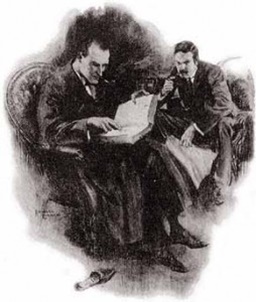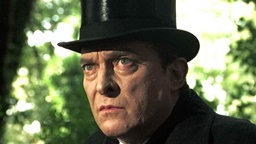The Public Life of Sherlock Holmes: Thoughts on The Sussex Vampire
Sumatra
 It seems somewhat curious that we find three references to Sumatra in the Canon. Two of those are to unrecorded cases, which makes matters even more intriguing. Sumatra is the sixth largest island in the world and a part of Indonesia. Indonesia was ruled by the Dutch for over three hundred years, including the entirety of Sherlock Holmes’ career (Japan occupied Indonesia during World War II and the country gained autonomy after that). I have visited Indonesia twice, as my wife was born and raised there.
It seems somewhat curious that we find three references to Sumatra in the Canon. Two of those are to unrecorded cases, which makes matters even more intriguing. Sumatra is the sixth largest island in the world and a part of Indonesia. Indonesia was ruled by the Dutch for over three hundred years, including the entirety of Sherlock Holmes’ career (Japan occupied Indonesia during World War II and the country gained autonomy after that). I have visited Indonesia twice, as my wife was born and raised there.
In “The Sussex Vampire,” Holmes mentions the Matilda Briggs, “a ship associated with the giant rat of Sumatra, a story for which the world is not yet prepared.” In “The Dying Detective,” Culverton Smith was a planter who lived in Sumatra. We are also told at the beginning of “The Reigate Squires” that Holmes was on the verge of collapse after foiling the colossal schemes of Baron Maupertuis, which involved the Netherland-Sumatra company.
Three references to people or things with Sumatran ties. Could tea somehow be related? Indonesia was one of the world’s leading tea producers until World War II. The region of Sumatra was the second-largest tea producing region in Indonesia. Was the death of Culverton Smith’s nephew somehow associated with the activities of Baron Maupertius, for whom Culverton Smith worked or was otherwise associated?
Here is one speculative theory regarding Sumatran elements in the Canon: Culverton Smith was a prosperous tea plantation owner in Sumatra. The Netherland-Sumatra Company used tea-importation as a front for the Baron Maupertuis’ nefarious activities. Maupertius was a villain suitable to oppose James Bond in another time.
The Baron was going to use a giant rat which would spread a great plague in London via the sewer system.
Smith had perfected the plague culture, using his own nephew as a guinea pig. Holmes had worked tirelessly to stop the Baron’s schemes, which would be brought to fruition when the Matilda Briggs, a tea trader owned by the Netherland-Sumatra Company, conveyed the giant rat of Sumatra to London. Holmes prevented the Baron’s plan from succeeding.
The Ungrateful Detective
Early in “The Sussex Vampire,” Watson explains the regional Sussex custom of naming houses after the owners who built them. Holmes, who clearly did not know this, responds to the new information by coldly saying “Precisely.”
Watson types something very telling about Holmes next. “It was one of the peculiarities of his proud, self-contained nature that, though he pocketed any fresh information very quietly and accurately in his brain, he seldom made any acknowledgement to the giver.”
Watson’s observation regarding Holmes’ attitude towards someone providing him new knowledge is similar to his denigration of Watson’s efforts as a detective. Holmes is not a gracious man. This is not surprising, considering the arrogance that he displays in various parts of the Canon.
I commented in this post about Watson’s abilities that Holmes refused to credit Watson’s efforts as a detective acting in Holmes’s stead. I asserted that he did this because he considered himself far superior to Watson in the consulting detective field and refused to consider that Watson might be competent in it. So, Holmes disparages Watson’s efforts in “The Solitary Cyclist,” “The Disappearance of Lady Frances Carfax” and “The Retired Colourman,” even though the good doctor more often than not does an adequate job.
Just as Holmes did not like to acknowledge the giver of new knowledge, he did not like to acknowledge Watson’s capabilities in the detective’s own chosen profession. The tangled skein of Holmes’ attitude towards Watson’s capabilities can be unraveled through careful examination of comments incidents in the Canon such as this one from “The Sussex Vampire.”
Jack is in for it Now
One might wonder at Holmes’ proposed solution to the problem of domestic friction within the Ferguson household. He suggests that Master Jacky should spend a year at sea. There is no further discussion of this idea.
Removing Jack from the Ferguson home seems necessary. But what in the heck is one year at sea going to do for him? The boy is repeatedly referred to as a cripple and he is most certainly emotionally stunted by his extreme devotion to his father. Crippling your dog and attempting to poison your step brother are not the actions of a well-adjusted child. It’s hard to picture any scenario where Jack can survive a year at sea on his own.
Assuming he somehow does get through a year aboard a ship, what then? What happens when he returns to his home? Is there even the remotest chance that he will happily blend into the family life and feel affection towards his stepmother and stepbrother? I can’t imagine it. Was Holmes merely suggesting a way to get rid of him until a more permanent solution could be found? Was Jack bound to be institutionalized in some manner? Other than to ensure the immediate safety of the baby, there does not seem to be much else to commend Holmes’ suggestion.
Holmes Among the Vampires?
As events prove, there are no vampires involved in “The Adventure of the Sussex Vampire.” However, a few pastiche writers have fond the lure of the nocturnal creatures irresistible. Loren D. Estelman (author of the Amos Walker mysteries) pitted Sherlock Holmes against the most famous vampire of them all in Sherlock Holmes vs. Dracula (or, The Adventure of the Sanguinary Count). Prolific Holmes author David Stuart Davies had Holmes and Dracula facing off in Baskerville Hall in The Tangled Skein. And noted science fiction write Fred Saberhagen had perhaps the strangest pairing of them all in The Holmes – Dracula File and a sequel.
Not Jeremy Brett’s Best
 The Last Vampyre was the beginning of the end for Jeremy Brett’s Holmes series. Producer June Wyndham Davies was informed that a two-hour feature was needed quickly and Jeremy Paul agreed to write a screenplay in less than three weeks. He chose “The Sussex Vampire” and dramatically reworked the story. Much of the film was shot in Cotswald (not Sussex). With the significant changes in story and setting, a new title was needed and The Last Vampyre was chosen.
The Last Vampyre was the beginning of the end for Jeremy Brett’s Holmes series. Producer June Wyndham Davies was informed that a two-hour feature was needed quickly and Jeremy Paul agreed to write a screenplay in less than three weeks. He chose “The Sussex Vampire” and dramatically reworked the story. Much of the film was shot in Cotswald (not Sussex). With the significant changes in story and setting, a new title was needed and The Last Vampyre was chosen.
It can be argued that the main character in the episode is Stockton, suspected by the townspeople of being a vampire. If this sounds unfamiliar, that is because the character was created for the show and does not appear anywhere in the Canon.
Stockton adds a true element of the supernatural that is missing in the original story, though the odd scene where he seems to see a ghost is quite bizarre and could have been left out with no apparent loss. His choked words are nearly impossible to decipher, even after repeated viewings. He can kill with a glance, but dies when his carriage careens into a tree; a most un-vampire-like way to go. It is never definitively established whether he is a vampire or not.
The part of the vicar was originally offered to former Holmes Peter Cushing, but his health did not permit acceptance of the role. Cushing had appeared ancient as Holmes nine years previously in The Masks of Death. It’s possibly just as well that a frail Cushing and a bloated Brett did not share the screen.
Jeremy Brett was overweight due to water retention and it showed. He struggled with the heat, as he insisted on only wearing black, believing it made him look slimmer. It scenes where he appears with the slender Stockton, it is clear that Brett no longer has that classic Holmes physique that made him such a great-looking Sherlock. Unfortunately, it would only get worse as his health declined.
Frankly, it seems as if Jeremy Paul and Director Tim Sullivan were determined to work in as many vampire and gothic elements as they could and the one hour, forty-eight-minute script wanders all over the place. The expository scene with the vicar and Holmes seems to drag on forever.
The Last Vampyre qualifies more as a pastiche than a Doyle adaptation. The positive elements are outweighed by the negative and the viewer is left with a spotty episode that is unlikely to be watched multiple times. Brett had little positive to say about the feature and was glad when the series returned to one-hour episodes, though the stories not yet filmed were among Doyle’s weakest.
You can read Bob Byrne’s ‘The Public Life of Sherlock Holmes’ column here at Black Gate every Monday morning.
He founded www.SolarPons.com, the only website dedicated to the ‘Sherlock Holmes of Praed Street’ and blogs about Holmes and other mystery matters at Almost Holmes.
He has contributed stories to The MX Book of New Sherlock Holmes Stories – Parts III, IV and V (and the upcoming VI).
I think Doyle’s first gig was as a ship’s doctor and he spoke very highly of the experience (If memory serves me correctly, he spent two straight years at sea and said he started out a boy and ended up a man) so maybe Holmes’ recommendation reflects the author’s own beliefs on the matter?
Jeremy in slimmer, happier and younger days (I’m guessing you’re only too familiar with this particular clip).
https://www.youtube.com/watch?v=I57BVLgtUvk&list=PL7pSDNZBw3xwMEyBj-wtOPlbQpxjJTjLy
Not a favorite story, or episode. Brett looked positively rotting.